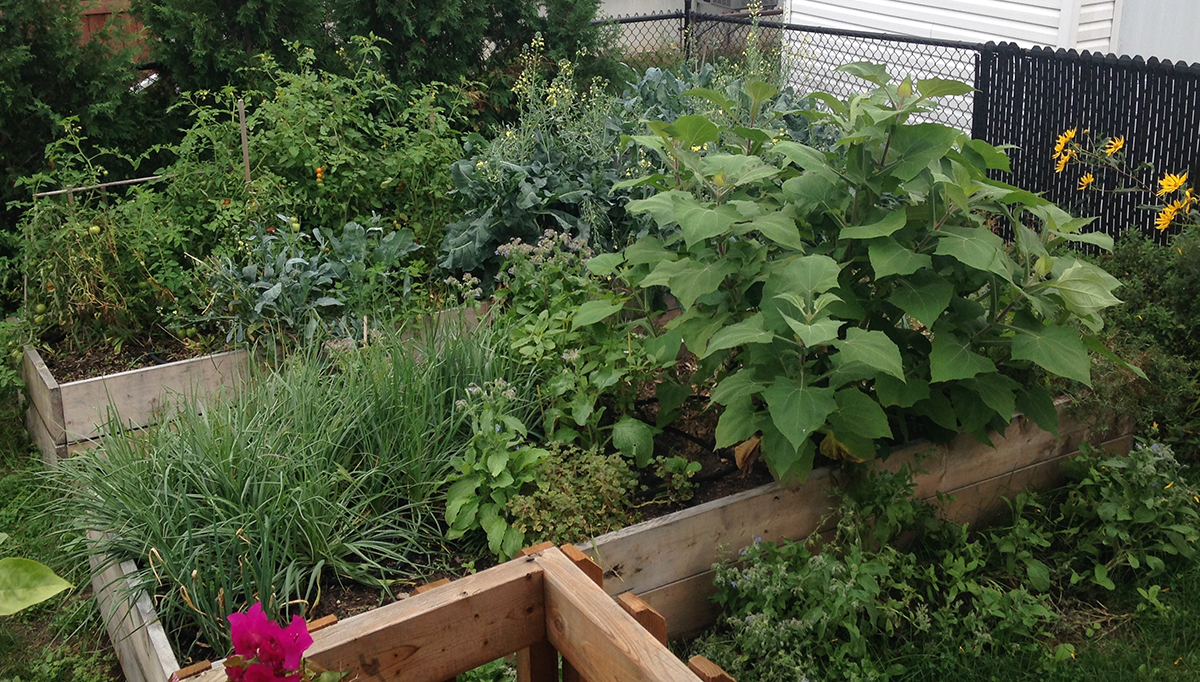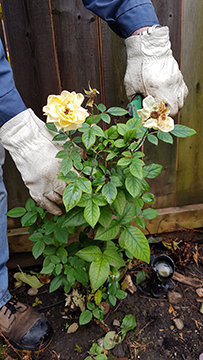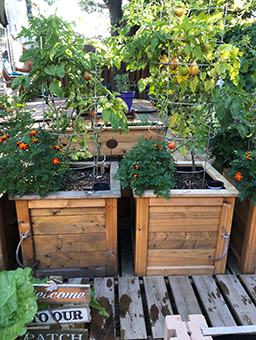
In the Garden
By Nancy McDonald
Increase your gardening fun by staying injury-free
By now you are excited. It’s almost time to shrug off winter weather and get gardening. You may think you are ready to go — plans made for ornamental beds, edibles decided and seed starting in progress — the joys of anticipation. But wait, what about you, the gardener? Are you ready for garden work? Have you been able, with winter’s weather challenges, to maintain an exercise routine? Or might you need, like those boys of summer, some ‘spring training’.
Let’s start there. Prevention of injury is the goal. As gardening is seasonal, improper gardening techniques can take their toll. In Ontario, 88 per cent of chiropractors say gardening is the most common source of back and neck injury during the spring and summer. Getting prepared may mean starting a regular exercise routine. Remember, check with your doctor before starting any new exercise program. And when you meet with your doctor, discuss your last tetanus vaccination, as a booster every 10 years is recommended.

Beginning a stretching routine a few weeks before starting outdoor work is a great idea and may help avoid later aches and pains. An exercise program needs to include exercises to strengthen the core, back, legs, arms and shoulders, preparing any inactive muscles for the work ahead. The City of Ottawa has a Better Strength, Better Balance program geared for persons over 65 which may be an option for some. Others may find it helpful to follow the American Association of Retired Persons suggested exercises with diagrams that can be done in the comfort of their home.
With muscles prepared, it’s into the garden you go. I may sound like a nagging voice in your ear but there is still more to preventing injury. Are you properly attired? Gardening is not a fashionista outing. Safety goggles, sturdy shoes and long pants are required when using power tools and equipment. In fact, sturdy shoes have replaced flip flops and sandals for all my garden activities. Invest in good gloves. Added to my garden safety gear recently was a simple pair of eye goggles. Less than $10 to purchase and such an easy way to protect the eyes when pruning or working near thorny shrubs.
Protect yourself from sun with long sleeves, wide-brimmed hats, and sunglasses (with both UVA and UVB protection). To prevent sunburn and future skin cancer, wear a broadband sunscreen with SPF of 30 or higher on all exposed skin and reapply every two hours. Avoid gardening between peak hours of eleven in the morning until three in the afternoon, or garden in a shady place during those hours. I garden in my west-facing garden in the morning and in my east-facing garden in the afternoon to avoid the sun’s rays.
Never to be forgotten is protecting ourselves from ticks and mosquitos as Lyme Disease and West Nile are both disease concerns in our region. Again, Ottawa Public Health is a valuable resource to get the facts on ways to prevent these diseases for ourselves, our family and our pets. While there are many ideas shared online regarding insect repellents, Health Canada is the safest site to find what you need to know.
Wow, if that seems to be a lot of preparation before getting out into the garden, it will over time become routine, only taking an extra few minutes. Now head outside and get started. Warming up those muscles and joints is a great plan.
The warm-up can be as simple as taking a brisk walk around the garden.
Think about the activity you are planning to do and make sure those muscles are warmed up.
Swing arms, lift knees…
My favourite is walking around and enjoying the garden as I plan my work. The Ontario Chiropractic Association has a simple online guide Plant and Rake without the Ache for great warm up exercises and ones which you can do when you take a break. Certainly, a desirable goal for all gardeners is to prevent those aches!
 When I am gardening, I certainly can lose track of time. That’s not good if I want to stay hydrated. It is so important to take a water bottle with me and drink from it when I take a stretch break — even if I am not feeling thirsty. And taking those breaks either indoors or in the shade decreases the chance of sunstroke.
When I am gardening, I certainly can lose track of time. That’s not good if I want to stay hydrated. It is so important to take a water bottle with me and drink from it when I take a stretch break — even if I am not feeling thirsty. And taking those breaks either indoors or in the shade decreases the chance of sunstroke.
Maturing with your garden may require changing to lower maintenance gardens, asking for assistance, and utilizing tools and ideas such as raised beds which decrease the garden workload. Replacing perennials with high impact shrubs is recommended by many as a way to decrease garden work. Ergonomic tools are becoming more available and it is important to find ones that are comfortable in your hand. The rake that agrees with your six-foot-tall partner may not work comfortably if you measure five-feet-two-inches and vice versa! The Arthritis Association of Canada is a great resource with gardening tips for anyone with osteoarthritis, a common disease in middle-aged and older adults.
Gardening benefits your entire body with different types of movement; stretching, weight-lifting and moderate cardiovascular workout. Digging in the soil has been shown in studies to make us happier. Mycobacterium vaccae, a soil bacterium has been found to






